When BMW launches a new 5 Series, it’s not merely a debut but a make-or-break course of action. Since the first-ever 5 Series – the E12, BMW made it clear that it builds THE sportiest sedan in the mid-size segment.
Besides the driving dynamics, things like comfort and gadgets also matter a lot for people interested in a car from this segment. BMW paid attention to what the people want and, as it happens, this generation is the best one yet.
Internally referred to as the G30, the sedan version of the 2017 BMW 5 Series is better in every single way compared to its venerable predecessor, the F10 5 Series. Beauty is in the eye of the beholder, surely, but characteristics that can be measured in numbers and usability favor the G30 5 Series. To comprehend the tidbits that make the seventh generation the best one yet, I’m much obliged to break them down in 5 easy-to-understand grounds.
- The G30 5 Series is larger, yet lighter than the F10 5 Series
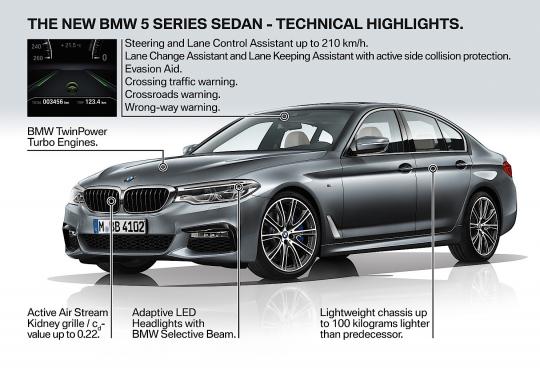
True to the BMW EfficientLightweight design concept, the platform and body of the G30 5 Series make extensive use of aluminum, magnesium, and a mix of high-tensile steels. Thus, up to 100 kilograms (220 pounds) were shaved off the weight of the F10 5 Series. All four doors, for example, boast aluminum shell construction and weigh merely 6 kilograms (13 pounds) each, including hinges.
Aluminum is also used for the trunk lid, hood, engine cross-member, rear side-members, and roof. To put these savings into perspective, the lightest model in the G30 5 Series family is the 520d with the 6-speed manual box, which weighs 1,615 kilograms (3,560 pounds) according to the EU standard. The F10 5 Series with the least weight is the 520i 6MT, weighing 1,670 kilograms (3,681 pounds).
In terms of size, the G30 5 Series is larger than the F10 5 Series. In terms of length, you’re looking at 4,936 mm (194.3 in) of car. Width: 1868 mm (73.5 in). Height: 1,479 mm (58.2 in). Wheelbase: 2,975 mm (117.1 in). Cargo capacity: 530 liters (18.71 cuFT). In the case of the BMW F10 5 Series, length stands at 4,907 mm (193.1 in). Width: 1,860 mm (73.2 in). Height: 1,464 mm (57.6 in). Wheelbase: 2,968 mm (116.8 in). Cargo capacity: 520 liters (18.36 cuFT).
- Tech-savvy car for the tech-savvy guy (or gal)
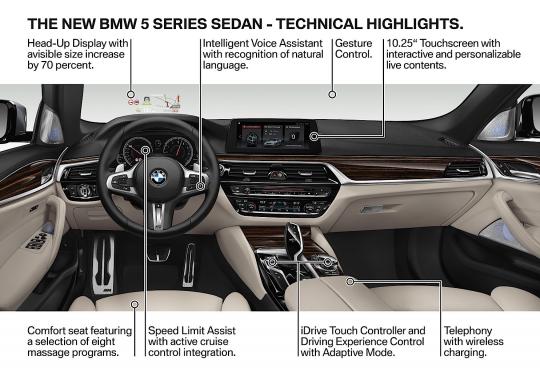
Oh boy, where to start? Just like the G11 7 Series, the G30 5 Series can be parked remotely by using the optional BMW Display Key. You know, that lil’ gizmo that looks more like a smartphone rather than a key. Then there’s the head-up display, which now prides itself on a resolution of 800 x 400, plus a projection area that’s 70 percent larger that that of the preceding generation.
For the melomanic in you, a 1,400-watt Bowers & Wilkins sound system is available if, for some reason, you need a boombox on wheels. In the area of semi-autonomous driving, the G30 5 Series can apply steering interventions when the situation calls for it at speeds as high as 210 km/h (130 mph). The G30 5 Series can also stop itself if the driver’s reflexes aren’t sharp enough. Integral Active Steering rear-wheel steering is available as an optional extra.
The iDrive infotainment system borrows pretty much the same functions as those found in the G11 7 Series, gesture control and all. On the 10.25-inch display of the infotainment system, the driver can access every little setting imaginable through the simple flick or push of the rotary controller. Other praiseworthy bits and bobs include wireless phone charging, wireless Apple CarPlay mirroring, and an LTE-capable Wi-Fi hotspot for up to ten devices.
- All-new or updated engines
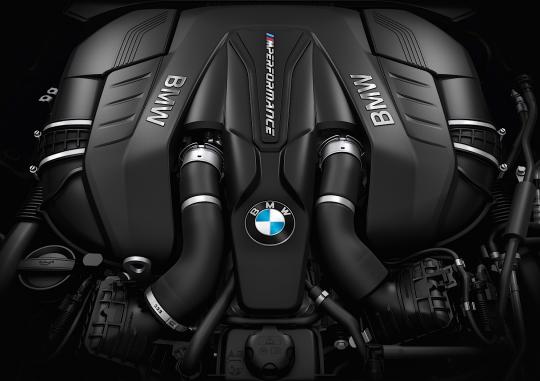
At launch, five powerplants will be available. Only one of those can be matched with a manual, and that is the rear-wheel-drive 520d. From the 520d xDrive upward, every single engine option is connected to a ZF-developed 8-speed Steptronic automatic transmission. The B47 2.0-liter TwinPower Turbo diesel engine produces 190 PS (140 kW) and 400 Nm (295 lb-ft) between 1,750 and 2,500 rpm. The automatic-only 520d EfficientDynamics Edition model is the most frugal diesel in the G30 5 Series family, drinking as little as 3.9 liters per 100 kilometers (60.3 U.S. mpg and 72.4 imperial mpg) on the combined cycle.
There’s an even more powerful diesel available in the form of the B57 3.0-liter straight-six. Having made its debut in the G11 730d, this oil-burning engine is capable of 265 PS (195 kW) and 620 Nm (457 lb-ft) of torque from 2,000 up to 2,500 rpm. Performance-wise, the 530d enhanced by xDrive can sprint to 100 km/h (62 mph) in 5.4 seconds. On the high-octane front, the B46 2.0-liter four-cylinder and B58 3.0-liter straight-six motor will be the biggest sellers of the lot.
Until the Bavarian automaker is done developing the F90 M5, the M550i xDrive will be the most driver-oriented G30 5 Series in the family. The M Performance land missile replaces the F10 550i and F10 550i xDrive models of yesteryear.
- The G30 M550i xDrive outguns the F10 M5 with less power and torque
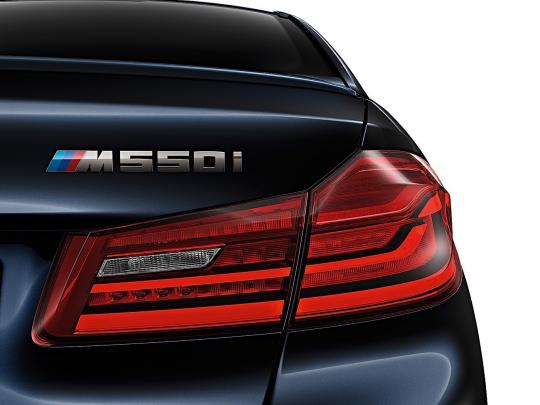
Currently the only V8-powered G30 5 Series, the M550i xDrive sends drive to all four wheels whether you like it or not. Happily, however, it’s a rear-biased system. Not only that, but xDrive enables the driver to carry a bit more speed into a corner and come back on the loud pedal sooner when exiting the corner.
xDrive is also a recipe for straight line performance. Despite having fewer ponies and torques than the F10 M5, the M550i xDrive races to 100 km/h (62 mph) 0.3 seconds quicker. 4.0 seconds versus 4.3 seconds, that is. The limited-run F10 M5 30 Jahre Edition is swifter still: 3.9 seconds to 100 km/h (62 mph).
Be that as it may, the 2017 BMW M550i xDrive is hugely impressive for what it is. If the M Performance model can do that with merely 462 PS (340 kW) and 650 Nm (479 lb-ft) from 1,800 rpm, can you imagine how mind-bending quick the F90 M5 will be? The full-blooded ///M machine is expected to debut in calendar year 2017 for the 2018 MY, packing a modernized S63 4.4-liter force-fed V8 engine.
Eco-friendly credentials? The 530e iPerformance plug-in hybrid has those
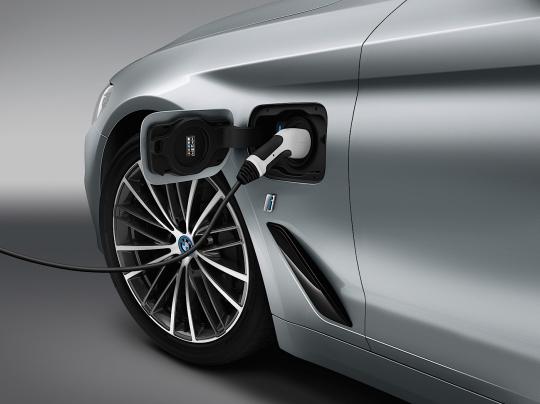
To be frank, nobody regards fuel economy as the deciding factor when buying a 5 Series. Nonetheless, BMW developed a plug-in hybrid version of the G30 5er. Dubbed 530e iPerformance, the powertrain is shared with the 330e and it comprises of the 2.0-liter TwinPower Turbo four-banger and an electric motor.
On its own, the ICE is good for 184 PS (135 kW) and 290 Nm (214 lb-ft) from 1,450 to 4,250 rpm. Matched with the BMW eDrive plug-in hybrid system, the maximum output goes up to 252 PS (185 kW) and 420 Nm (310 lb-ft) available from 1,450 to 4,000 rpm. The run to 100 km/h (62 mph) is done in 6.2 seconds. Fuel economy is rated at 2.0 l/100 km (117.6 U.S. mpg or 141.2 imperial mpg).
Purely electric, the 2017 BMW 530e iPerformance has a 9.2 kWh lithium-ion battery with enough zap for up to 45 kilometers or 27 miles. Top speed when the vehicle is being driven in electric drive mode is capped at 140 km/h (87 mph). When it’s charged from a 2.7 kW/12 A socket, a full charge takes up to 3 hours and 50 minutes. To make room for the battery pack, BMW engineers decided to swap the standard 68-liter fuel tank from the G30 530i sedan for one that displaces 46 liters (12.1 U.S. gallons or 10.1 imperial gallons).








